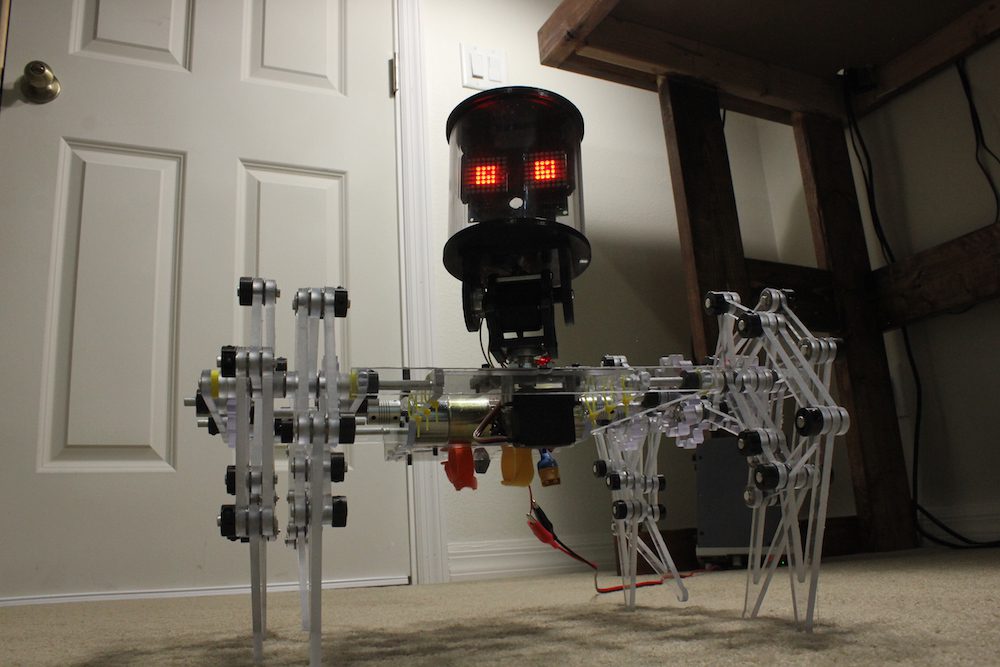Schlagwort: Strandbeest
-

Concept Bytes’ coffee table tracks people and walks itself across a room when called
Reading Time: 2 minutesThe term “mmWave” refers to radio waves with wavelengths on the millimeter scale. When it comes to wireless communications technology, like 5G, mmWave allows for very fast data transfer — though that comes at the expense of range. But mmWave technology also has some very useful sensing and scanning applications, which you…
-

This Strandbeest-style coffee table can deliver drinks
Reading Time: 2 minutesMore than 30 years ago, Dutch artist Theo Jansen began astounding the world with his Strandbeesten walking sculptures. Even after decades, they have an almost mythical allure thanks to the incredibly fluid way in which they walk. They’re clearly constructs, but with gaits that are almost organic. Inspired by his fellow Dutchman,…
-

ClearCrawler Strandbeeest walks under Arduino control
Reading Time: < 1 minuteClearCrawler Strandbeeest walks under Arduino control Arduino Team — December 3rd, 2019 Maker Jeremy S. Cook has been building Theo Jansen-style walkers for literally years, and after several iterations has come up with what he calls the “ClearCrawler.” This little guy stands at just over 15 inches tall — including its…
-

Standbeest-inspired ClearCrawler robot clomps around on 8 legs
Reading Time: 2 minutesStandbeest-inspired ClearCrawler robot clomps around on 8 legs Arduino Team — July 23rd, 2019 When you want to build a walking robot, the normal route is to individually control each leg with a number of servos or other actuators. Maker Jeremy S. Cook, however, took a different approach with his ‘ClearCrawler,’ using…
-

Standbeest-inspired ClearCrawler robot clomps around on 8 legs
Reading Time: 2 minutesStandbeest-inspired ClearCrawler robot clomps around on 8 legs Arduino Team — July 23rd, 2019 When you want to build a walking robot, the normal route is to individually control each leg with a number of servos or other actuators. Maker Jeremy S. Cook, however, took a different approach with his ‘ClearCrawler,’ using…
-

Mini Strandbeest goes electric with Arduino
Reading Time: < 1 minuteMini Strandbeest goes electric with Arduino Arduino Team — November 9th, 2017 Strandbeests, as originally conceived, are gigantic PVC creatures that walk across the sand under wind power. While building one is certainly an enormous undertaking, smaller models are available that let you experience this strange kinetic motion in a more…




